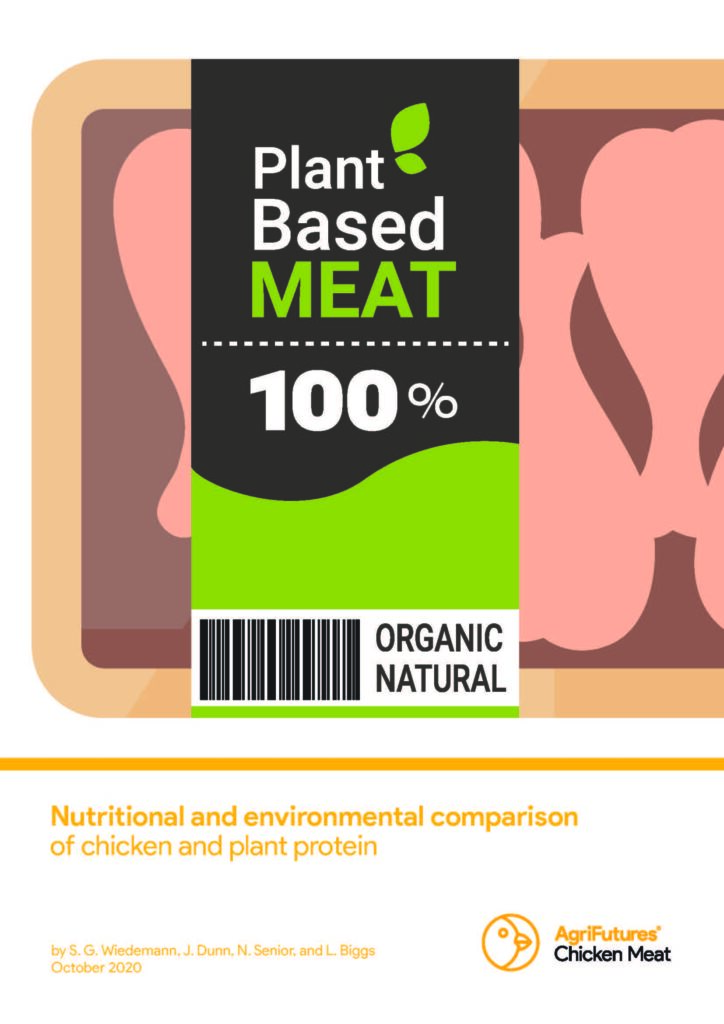Increasing ethical and environmental concerns of consumers surrounding traditional meat products has resulted in the emergence and expansion of meat alternatives in the market. These products include plant-based alternatives (soy, wheat, pea, oat), animal-based alternatives (milk and insects), microbial products (mycoprotein), and cultured meats.
Plant-based alternatives (PBAs) and meat analogues are manufactured food products that are designed to mimic the taste and texture of meat products. Meat substitutes aim to reduce environmental impacts caused by livestock production and are often marketed as a more environmentally friendly option compared to meats, commonly beef. However, research shows that Australian chicken meat has relatively low environmental impacts compared to other meat products and it is therefore less clear whether these general comparisons are reasonable for comparing Australian chicken and PBAs or meat analogues.
For comparisons to be informative, they also need to consider the nutritional factors associated with different products, and such knowledge is lacking for Australian chicken meat and alternatives. This project aimed to address these knowledge gaps by (1) determining the nutritional comparability of chicken meat to common PBAs and cultured meat via a literature review, and (2) by conducting a scoping life cycle assessment (LCA) to investigate the environmental impacts of the alternative foodstuffs and Australian chicken meat.
The net result of the analysis of the literature and the scoping analysis results suggested that the comparison was much closer to equivalent than is commonly claimed. For example, the claimed 70 % lower carbon footprint of Quorn than chicken is much more than our scoping study results, which showed 15 % higher impacts for chicken than Quorn, which considering the degree of uncertainty in the results is marginal and likely to be not statistically significant. For other impact categories of interest, the scoping results showed impacts such as fossil fuel energy may be lower for chicken, though this was very sensitive to the region of the world where the PBA was manufactured. This finding was similar with other products available on the Australian market.





